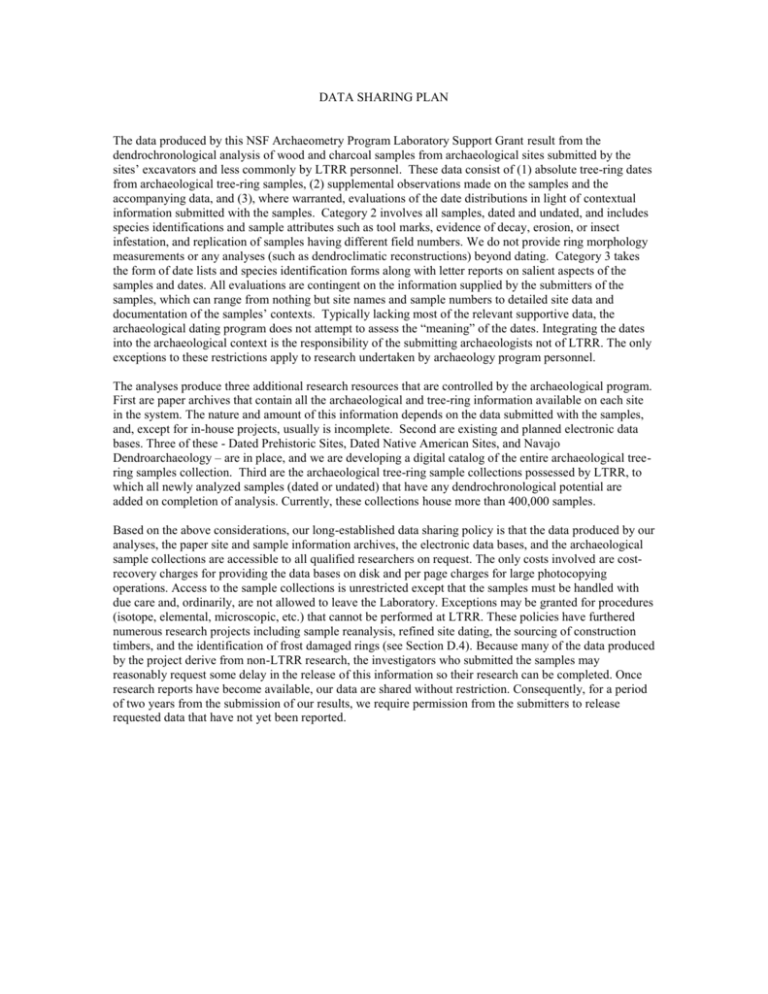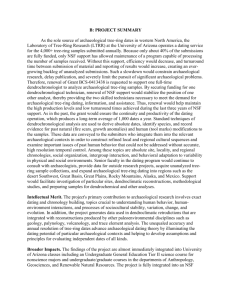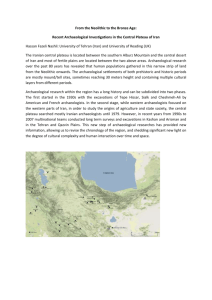LabSuppVIISharing - Laboratory of Tree
advertisement

DATA SHARING PLAN The data produced by this NSF Archaeometry Program Laboratory Support Grant result from the dendrochronological analysis of wood and charcoal samples from archaeological sites submitted by the sites’ excavators and less commonly by LTRR personnel. These data consist of (1) absolute tree-ring dates from archaeological tree-ring samples, (2) supplemental observations made on the samples and the accompanying data, and (3), where warranted, evaluations of the date distributions in light of contextual information submitted with the samples. Category 2 involves all samples, dated and undated, and includes species identifications and sample attributes such as tool marks, evidence of decay, erosion, or insect infestation, and replication of samples having different field numbers. We do not provide ring morphology measurements or any analyses (such as dendroclimatic reconstructions) beyond dating. Category 3 takes the form of date lists and species identification forms along with letter reports on salient aspects of the samples and dates. All evaluations are contingent on the information supplied by the submitters of the samples, which can range from nothing but site names and sample numbers to detailed site data and documentation of the samples’ contexts. Typically lacking most of the relevant supportive data, the archaeological dating program does not attempt to assess the “meaning” of the dates. Integrating the dates into the archaeological context is the responsibility of the submitting archaeologists not of LTRR. The only exceptions to these restrictions apply to research undertaken by archaeology program personnel. The analyses produce three additional research resources that are controlled by the archaeological program. First are paper archives that contain all the archaeological and tree-ring information available on each site in the system. The nature and amount of this information depends on the data submitted with the samples, and, except for in-house projects, usually is incomplete. Second are existing and planned electronic data bases. Three of these - Dated Prehistoric Sites, Dated Native American Sites, and Navajo Dendroarchaeology – are in place, and we are developing a digital catalog of the entire archaeological treering samples collection. Third are the archaeological tree-ring sample collections possessed by LTRR, to which all newly analyzed samples (dated or undated) that have any dendrochronological potential are added on completion of analysis. Currently, these collections house more than 400,000 samples. Based on the above considerations, our long-established data sharing policy is that the data produced by our analyses, the paper site and sample information archives, the electronic data bases, and the archaeological sample collections are accessible to all qualified researchers on request. The only costs involved are costrecovery charges for providing the data bases on disk and per page charges for large photocopying operations. Access to the sample collections is unrestricted except that the samples must be handled with due care and, ordinarily, are not allowed to leave the Laboratory. Exceptions may be granted for procedures (isotope, elemental, microscopic, etc.) that cannot be performed at LTRR. These policies have furthered numerous research projects including sample reanalysis, refined site dating, the sourcing of construction timbers, and the identification of frost damaged rings (see Section D.4). Because many of the data produced by the project derive from non-LTRR research, the investigators who submitted the samples may reasonably request some delay in the release of this information so their research can be completed. Once research reports have become available, our data are shared without restriction. Consequently, for a period of two years from the submission of our results, we require permission from the submitters to release requested data that have not yet been reported.







